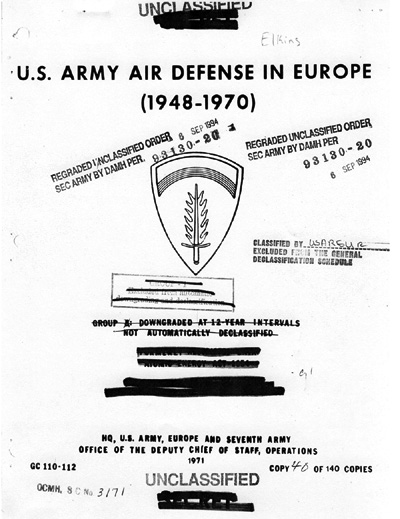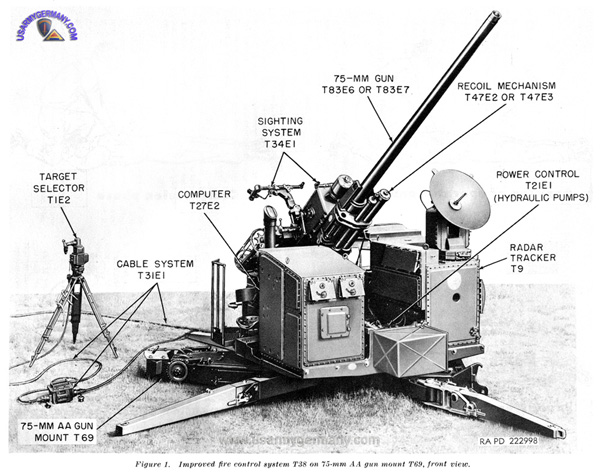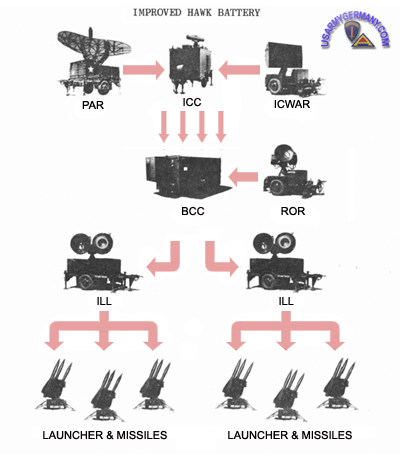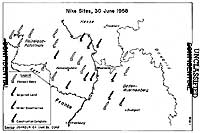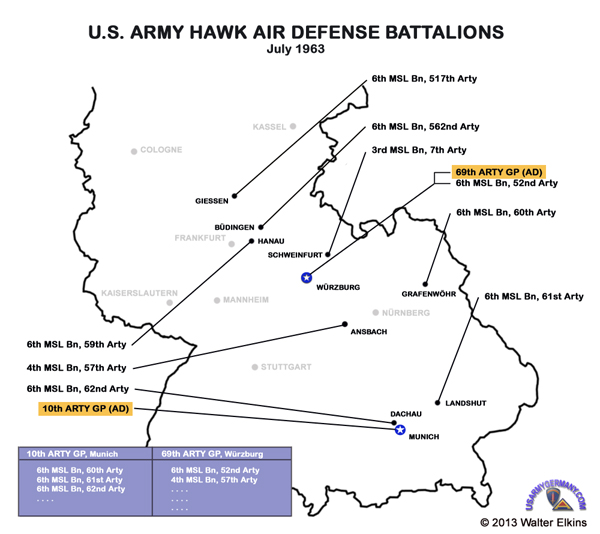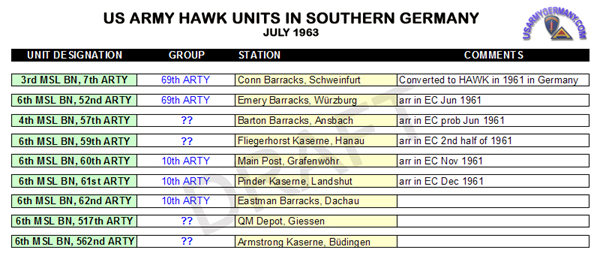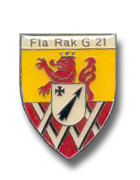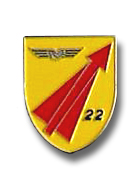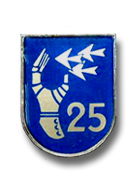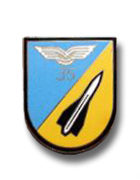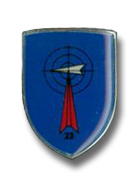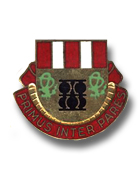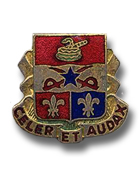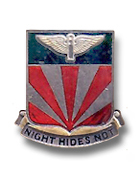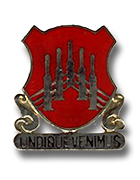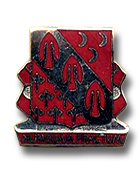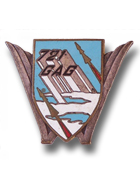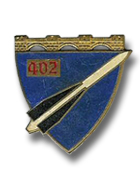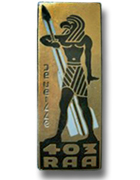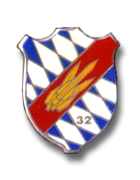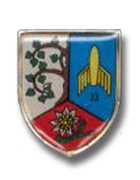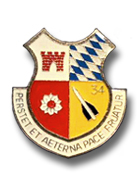If you do
NOT see the Table of Contents frame to the left of this page, then
Click here to open 'USArmyGermany'
frameset |
Army
Air Defense in the European Theater
US Army, Europe
Looking for more information from military/civilian
personnel assigned to or associated with the U.S. Army
in Germany from 1945 to 1989. If you have any
stories or thoughts on the subject, please contact me . .
|
|
|
|
|
| |
| USAREUR Historical Manuscript |
| |
|
|
|
| The
Early Years |
| |
| 1950s |
| (Source: Annual
Historical Report, HQs USAREUR, 1 Jul 1956-30 Jun 1957, HQ USAREUR
1958) |
|
AIR
DEFENSE 1956/57
Section I - Command Problems
Over-all Control of Antiaircraft Weapons
Throughout 1956 the over-all responsibility for the control
of U.S. air defense in Europe constituted a major problem. CINCUSAFE
wanted his command to be designated as the single U.S. air defense
planning agent to work with SACEUR and the Commander, Twelfth Air
Force, appointed as the U.S. air defense commander in Central Europe.
CINCUSAREUR maintained that USAFE and USAREUR should be jointly
responsible for air defense planning within areas of U.S. interest.
Moreover, since missile units would be largely wasted under the
existing air defense procedures an integrated air defense plan with
realistic rules of engagement was needed before the NIKE battalions'
arrival in Europe.
In an effort to solve the air defense problem, US CINCEUR appointed
a joint committee to contact the various headquarters and devise
common policies on rules and priorities of engagement, command structures,
etc.
In the study that it prepared, this committee recommended, among
other things, that operational control of all Seventh Army nondivisional
antiaircraft artillery units be assigned to the Commander, Twelfth
Air Force, who would be assisted by a joint air defense staff. An
a result, US CINCEUR created the interim joint air defense staff
to evaluate and implement the recommendations of the study. In addition,
in October 1956 US CINCEUR directed CINCUSAFE to nominate a deputy
for Air Defense (Designate) as head of the above-mentioned joint
air defense staff, while CINCUSAREUR was to designate the assistant
deputy for air defense. Both component commanders were to furnish
on call a small number of officers for the initial staff that would
serve as a nucleus for later expansion into a permanent staff.
The Proposed USAREUR AAA Employment Plan
At approximately the same time that word was received of US EUCOM'
s intention to place Seventh Army's nondivisional AAA units under
the operational control of the Air Force, USAREUR was informed of
the new Army reorganization plan that would eliminate its divisional
antiaircraft battalions. If implemented literally, these two actions
could have deprived the Seventh Army commander of any control over
his means, thereby seriously limiting Seventh Army's air defense
capability. Any aerial attack in Central Europe undoubtedly would
be accompanied by ground action. Since Seventh Army -- the only
force screening the SHAPE retaliatory bases from such ground attacks
-- would not be able to defend itself against a potential atomic
air attack, the airbases might be overrun in a very short time.
Furthermore, Seventh Army had to retain the capability for its own
antiaircraft defense in the forward combat zone in order to protect
its organic atomic delivery systems and support units. Without AAA
defense for the movement of troops between areas and through defiles,
the essential tactical mobility of Seventh Army would be severly
restricted.
To preserve Seventh Army's antiaircraft defense capability and at
the same time make proper provision for a defense of fixed installations,
CINCUSAREUR in November 1956 proposed a realignment of the limited
air defense means available. Two AAA groups, five 90-mm gun battalions,
and two AA operations detachments would be placed under USAREUR
headquarters. The 34th AAA Brigade and the other antiaircraft units
would remain under Seventh Army. To more clearly delineate crew
of responsibility, USAREUR intended to establish a Seventh
Army Rear Air Defense Boundary, which was to be located
initially on the west bank of the Rhine River and subsequently moved
as the situation dictated.
The five 90-mm gun battalions mentioned above, of which four were
scheduled for conversion to NIKE surface-to-air missile units during
FY 1958, would be allocated to the static defenses west of the Rhine
River in the Kaiserslautern and Bitburg-Spangdahlem-Hahn areas.
Pending conversion to NIKE, these battalions would provide low and
medium altitude air defense of US EUCOM's first two priority areas.
Two self-propelled automatic weapons (AW) battalions, five Skysweeper,
and two 90-mm gun battalions would be allocated to the mobile defense
of the Seventh Army east of the Rhine and for the defense of the
Rhine River bridges. Since the two self-propelled battalions were
not suitable for defense of area targets, they would be employed
to replace the existing divisional AA battalions upon completion
of the reorganization process. The five Skysweeper battalions would
provide low altitude defense of Seventh Army's atomic delivery means,
major headquarters and other critical installations east of the
Rhine and would assist in the defense of the Rhine River bridges.
After conversion to NIKE, the two 90-mm gun battalions would be
stationed east of the Rhine to defend Seventh Army units and the
Rhine bridges against either air or ground attack. All these AAA
units would be sufficiently mobile to displace with Seventh Army
in forward, lateral or retrograde mavements and would protect the
army forces wherever they were deployed.
On 28 November 1956 CINCUSAREUR recommended that the US EUCOM air
defense study be modified to reflect this reallocation of AAA units
before the implementing order was given. US EUCOM, however, decided
to withhold specific comment until the USAREUR proposals could be
studied thoroughly and referred to the interim joint air defense
staff. The interim joint staff not only considered CINCUSAREUR's
proposed AAA employment plan but prepared four reports, three of
which contained divergent Army-Air Force views concerning the organization
of a permanent joint air defense staff, the rules of antiaircraft
engagement, and the use of available antiaircraft artillery forces.
Only on the question of the utilization of four additional NIKE
battalions did the Army and Air Force elements of the interim joint
staff reach agreement.
The Draft of the US EUCOM Air Defense Directive
In February 1957 US CINCEUR made an effort to resolve the Army-Air
Force conflict within the interim joint air defense staff. A US
EUCOM air defense directive was drafted whose stated purpose was
to establish the most effective employment of air defense weapon
or combinations of weapons, while guaranteeing maximum possible
freedom of operational action to all elements of U.S. forces involved.
Any air defense plan adopted by US EUCOM had to support SACEUR's
Emergency Defense Plan, which required that all friendly atomic
storage sites and the airbases from which atomic retaliatory attacks
could be launched be protected against enemy atomic air attacks.
Since primary consideration had to be given to defending these areas,
the EUCOM directive delegated responsibility for the air defense
of Central Europe to the Commander, Twelfth Air Force, who was to
be assisted by a joint air defense staff -- provided by CINCUSAFE
and CINCUSAREUR -- which would function at Twelfth Air Force headquarters.
Air defense priorities were established as follows: the Kaiserslautern
complex, the Bitburg-Spangdahlem airbases, the Rhine River bridges,
and the Hahn Air Force base. Five 75-mm gun battalions, seven 90-mm
gun battalions, seven AW battalions, four all-weather interceptor
squadrons, and four day-fighter squadrons were available to defend
these areas. According to the draft plan, USAREUR would be required
to place its seven 90-mm and five 75-mm Skysweeper battalions under
the operational control of the Commander, Twelfth Air Force, who
would use them for air defense on a full-time, continuous basis.
These units would not be assigned any other mission, nor would they
be redeployed without prior approval of the air defense or theater
commander. They would, however, be employed under Army command.
One 75-mm and four 90-mm gun battalions would be deployed in the
Kaiserslautern area; two 90-mm and two 75-mm battalions would protect
the Bitburg-Spangdahlem airbase areas; one 90-mm battalion would
be deployed at the Hahn airbase; and two 75-mm battalions would
be allocated to defend the Rhine River bridges. When NIKE missiles
replaced the 90-mm guns, consideration would be given to reassigning
the 75-mm battalions. The remaining two nondivisional AW battalions
and the five divisional AW battalions would be responsible for the
local defense of Seventh Army units. If the Department of the Army
reorganization of divisions eliminated the organic AW battalions
and failed to provide corps and/or army combat support counterparts,
the use made of the AA units would be reexamined. However, according
to the most recent information six AW battalions would be retained
in Europe even after the divisional reorganization.
Upon becoming available the six NIKE battalions would be deployed
to US EUCOM-approved sites; upon becoming operational, they would
assume their full-time air defense role under the operational control
of the Commander, Twelfth Air Force. If four additional NIKE battalions
were received, the first would be used for the defense of the Hahn
airbase area and the next three for the air defense of Army logistical
installations and the Air Force main operating bases in the Verdun-Nancy-Metz
(France) complex.
USAFE was to make its four all-weather interceptor squadrons available
for air defense on a similar full-time basis without assigning them
any other missions. The four day-fighter squadrons and an Air Force
tactical contrl group would be available only on a part-time basis
to permit their use on other missions that might be of overriding
importance at the time.
a. USAREUR's Reaction. CINCUSAREUR objected to the US EUCOM
draft air defense plan, stating in effect that the plan violated
military principles by depriving the Seventh Army commander of all
his organic air defense weapons larger than 40-mm, even though he
would have to engage an enemy with considerable air superiority
and with an ample number of atomic weapons. Further, the draft directive
did not recognize that the Seventh Army had such high priority AA
defense missions as protecting atomic delivery units and special
weapons support forces. Lastly, the draft plan violated Army regulations
in depriving the army commander of the full air defense control
of his area.
To deprive the Seventh Army commander of all but a six self-propelled
AW battalions of extremely limited effectiveness for protecting
his forces in the combat zone might have serious implications, especially
in view of the Air Force's obvious inability to prevent low altitude
attacks against troops in the forward areas. Ideally, Seventh Army
ought to have 19 battalions of antiaircraft artillery, both automatic
weapons and Skysweepers, to provide the necessary low altitude protection
of the field forces, particularly the atomic delivery units. For
this reason, not less than 12 battalions -- preferably 9 Skysweeper
and 3 automatic weapons -- would have to be placed under Seventh
Army control in the forward areas. (A corresponding request for
this number had been approved in a new troop basis.) Seventh Army's
5 Skysweeper battalions would have to be retained for local defense,
and 4 additional battalions should be transferred from the United
Kingdom in exchange for 4 AW battalions that could then be inactivated.
Such a change would provide Seventh Army with the most up-to-date
equipment, give the Army forces an all-weather air defense capability,
and result in a personnel savings of approximately 900 spaces. US
CINCEUR, however, did not favorably consider CINCUSAREUR's request
on the grounds that the available AA units were insufficient for
the protection of the high priority atomic retaliatory air bases.
Moreover, because of their lethal capabilities, any Skysweeper battalions
transferred from the United Kingdom would of necessity be placed
under the operational control of the commander responsible for air
defense. The reliability and suitability of the Skysweeper as a
weapon in a forward defense area, where frequent movements would
be necessary, left much to be desired. Much of Seventh Army's air
defense in the combat zone would have to be provided by passive
means.
CINCUSAREUR adhered to the position taken in November 1956 and requested
the draft air defense directive be revised to provide for an allocation
of five 90-mm gun battalions for the defense of priority installations.
He also asked that the remaining Seventh Army AA units constitute
the ground forces' organic local defense means, to be employed as
directed by the Seventh Army commander in accordance with the existing
tactical situation. The army commander should also be given the
authority to establish AAA weapons fire areas into which friendly
aircraft would not fly without prior clearance. In these areas the
firing units would be free to engage any aircraft not identified
as friendly. This would offset the inability of the Air Force to
provide adequate early warning and timely identifications and would
prevent, by interception, the delivery of air attacks against troops
in the forward areas.
b. The Proposed Deployment of Conventional AAA to U.S.-controlled
Facilities.
Upon being advised that the acquisition of real estate for conventional
AAA weapons sites around priority installations should not be undertaken
until NIKE sites had been acquired, US EUCOM on 25 March 1957 requested
CINCUSAREUR for information on the consequences of redeploying the
75-mm and 90-mm weapons to U.S.-controlled properties in the Kaiserslautern,
Bitburg-Spangdahlem, Hahn, and Rhine bridge areas. A study forwarded
by Seventh Army in April showed that the proposed deployment would
permit only a very poor air defense capability; in no case would
the optimum defense desired be closely approached. Such a redeployment
would draw the battalions so near the center of the vulnerable area
that the possibility of engaging hostile aircraft beyond a bomb
release line would be very remote. Except for the protection that
could be afforded the air bases against dive bombing, U.S.-controlled
real estate around the vital areas was either too limited or too
poorly situated to permit the establishment of an effective, all-around
antiaircraft defense. Furthermore, 6 of the 7 assigned 90-mm gun
battalions would be converted to NIKE equipment and moved to temporary
or permanent sites, from which active defense of the priority areas
would be possible. To deploy these battalions to the site before
the receipt of the missile equipment might hamper the conversion
program and interfere with site construction.
The real deterrent -- the lack of sufficient ground space -- would
be felt especially at the Bitburg, Spangdahlem, and Hahn air bases
where all the available U.S.-controlled areas were within the confines
of the air installations. If the air defense units took up some
of the airbase space, they might interfere with Air Force operations.
In addition, the costs of installing communications and of construction
revetments, on-site troop billets, and other necessary facilities
would not be commensurate with the degree of air defense protection
that would be realized. This matter was to be coordinated with USAFE
before any further planning was undertaken; USAREUR took no further
action during the remainder of the fiscal year.
c. The Final US EUCOM Position.
After having studied CINCUSAREUR's comments on the US EUCOM draft
air defense directive, Deputy US CINCEUR concluded that no change
in the theater air defense concepts outlined in the draft directive
was justified. To be effective, air defense had to be properly organized,
the necessary operating procedures had to be devised, and available
forces had to be so used as to meet the over-all requirements of
the theater, rather than those of any one service element. The future
use of the unconverted 90-mm gun battalion and the 75-mm battalions
could be reconsidered after the 6 NIKE battalions programmed for
USAREUR became operational. On the basis of these conclusions the
draft air defense directive was submitted to US CINCEUR for approval,
after which the permanent joint air defense staff would be established,
AAA units would move to on-site positions, and communications would
be established. The air defense draft had not been approved by the
end of the reporting period.
The USAREUR AAA Reorganization plan
Three factors were of importance in the realignment of certain air
defense responsibilities within the USAREUR area proposed in May
1957. First, in a memorandum published on 26 November 1956, the
Secretary of Defense provided guidance to US CINCEUR by clarifying
the roles and missions of the military services in air defense.
The memorandum enunciated the principle that in overseas areas,
the U.S. theater commander should normally assign responsibility
for air defense to an air component commander, with the other component
services participating appropriately. Under this arrangement, the
field Army commander would continue to be responsible for his own
local defense employing organic means. Other Army air defense units
would carry out point defense missions under the air component commander,
while Air Force units would carry out the area defense missions.
Army Regulation 525-50, also published in November 1956, amplified
the memorandum by defining the Army commander's role in air defense
in the combat area. By limiting the amount of outside control, the
Army regulation preserved a measure of autonomy in the employment
of Army air defense weapons.
The second major factor was the requirement inherent in the Army's
basic missions according to which the Army was to provide antiaircraft
defense for all military services and their facilities. In accordance
with this requirement, US CINCEUR had established an integrated
priority list of Army, Navy, and Air Force installations to be defended.
USAREUR, in turn, had prepared a NIKE deployment plan which US EUCOM
had approved. In essence, this plan provided for siting 4 NIKE battalions
to protect the Kaiserslautern complex and the Bitburg-Spangdahlem
airbases, all of which were situated west of the Rhine River. 2
NIKE battalions would be sited east of the Rhine to protect essential
bridges between Mainz and Karlsruhe. The last factor that influenced
the USAREUR AAA reorganization plan was that US EUCOM had not recognized
Seventh Army's mobile forces as an entity competing with fixed installations
for high priority air defense considerations. In its new plan USAREUR
attempted to provide the necessary defense of the priority fixed
installations, to afford a measure of protection to Seventh Army's
mobile forces, and to comply with directives from higher headquarters.
According to the air defense reorganization concept, USAREUR retained
the west bank of the Rhine River as the boundary dividing the combat
zone into a "forward area" to be defended by Seventh Army, in which
were situated substantially all field forces and vital Seventh Army
installations and a "rear area" to be defended by the 32d AAA
Brigade, in which USACOMZEUR and USAFE forces and static facilities
predominated. Army air defense operations would be conducted in
accordance with SHAPE air defense procedures.
Upon the outbreak of hostilities (Phase 1), Seventh Army would provide
air defense for all U.S. forces and vital installations east of
the Rhine, giving initial priority to the protection of the Rhine
River bridges and the special weapons delivery units. In the event
of an alert the 32d AAA Brigade would transfer the 1st AAA Group
with 2 90-mm gun battalions to the Seventh Army and would deploy
3 90-mm AAA battalions for the defense of the Kaiserslautern complex,
and 1 75-mm battalion each to the Sembach, Bitburg, and Spangdahlem
airbases. Plans for operations after the outbreak of hostilities
(Phase II) would be prepared in coordination with Seventh Army.
A maximum effort was to be made toward taking such passive air defense
measures as cover, concealment, camouflage, dispersal, and deception.
The advantages of the proposed realignment of responsibilities would
be many. Seventh Army would be freed from Theater Army antiaircraft
defense responsibilities; at the save time, it would be given command
of Skysweeper battalions and NIKE units in the forward areas, even
though these units would be under the Twelfth Air Force's operational
control; a command structure would be created for the expansion
of Theater Army antiaircraft forces into the communications zone;
and the NIKE battalions deployed in the forward areas would provide
the ground forces commander with required fire support. The main
disadvantage was that the NIKE defense forces would be split between
two brigades.
Seventh Army nonconcurred on the grounds that divided authority
and responsibility would jeopardize operations of the NIKE defenses
and would complicate coordination and reorganization in the event
of movement of any defense elements across the Rhine. Further, it
would also violate the Department of the Army policy on air defense.
In rebuttal, the USAREUR Air Defense Division pointed out that the
proposed realignment was in consonance with the departmental air
defense policy to the extent permitted by the US EUCOM draft directive;
therefore, its adoption would place the Army in a strong position
to rebut the directive. CINCUSAREUR approved the proposed realignment
of air defense responsibilities shortly after the close of the reporting
period.
Department of the Army Concern over US EUCOM Concepts
At the close of the fiscal year, Department of the Army concern
over the US EUCOM air defense concepts was expressed by the Army
Chief of Staff in a letter to CINCUSAREUR which questioned two aspects
of the US EUCOM draft directive. The first was the contemplated
establishment of a quasi-joint air defense control structure in
the combat zone that would remove most of the field army commander's
organic air defense means from his control. The second objectionable
aspect was the lack of Army representation at certain echelons within
the proposed structure. As an alternate solution it was suggested
that the Seventh Army commander or his representative be designated
as an air defense sector chief under the operational control of
the joint air defense commander. This approach would have the double
advantage of keeping the air apace in the Seventh Army area under
ground force control and conforming with a proposed SHAPE plan for
air defense sectors in Enrope.
Participation in Joint Planning
a. The US EUCOM Air Defense Requirements Study.
In January 1957 the Joint Chiefs of Staff directed US CINCEUR to
submit an air defense plan for his area of responsibility that could
contribute to the establishment of a JCS "order of magnitude" estimate
of the over-all defense requirements for all overseas areas. Representatives
of USAREUR, USAFE, SETAF, NELM, and USEUCOM formed an ad hoc committee
which, after having received intelligence estimates and strategic
concepts from the U.S. element of SHAPE, formulated guidance for
a working group, composed of officers and civilian scientists from
USAREUR and USAFE headquarters. The study produced by this working
group was used by US EUCOM to evaluate certain conclusions concerning
the adequacy of previously stated requirements. The contents of
the study are analyzed in the top secret supplement to this report.
b. U.S. Planning for Areas Outside of Central Europe.
Concurrently with the preparation of the US EUCOM requirements study
for Central Europe, US CINCEUR directed USAFE to prepare a similar
study for Spain, Portugal, and Morocco with the assistance of USAREUR.
Although CINCUSAREUR's air defense responsibilities did not extend
to this area, it was considered to the best interests of the U.S.
Army that USAREUR participate in requirements planning for the area.
Accordingly, one USAREUR member of the main working group was made
available temporarily to USAFE headquarters.
Participation in NATO Planning
In June 1957 SHAPE forwarded to the Department of the Army and to
USAREUR its draft plan for the coordination of air defenses of NATO
Europe in the 1960 period with a request for comments. In essence,
the plan proposed a barrier-type air defense, with surface-to-air
guided missiles (SAM) defending the forward areas and manned interceptor
aircraft the rear areas. Air defense sectors were to be established,
and a system of control was proposed.
On 24 June the Department of the Army raised a number of specific
objections to SHAPE's proposals. The draft plan man designed as
a step to provide a logical transition from the current NATO posture
to the more fully coordinated systems of the post-1965 period when
manned interceptors would have little or no capability of meeting
the threat behind the forward areas. Therefore, it was considered
that requirements for that period should not be based on interceptor
forces available for air defense during 1960-62. In addition, no
costly aircraft control systems should be established because of
the short life and marginal value of aircraft. Since restrictions
on SAM fire might have to be imposed to protect the interceptors
while in flight, the best solution would be to exclude interceptors
from the SAM areas of coverage.
The normal fire procedure outlined in the draft plan appeared to
give higher headquarters the authority to commit individual surface-to-air
missiles against certain targets, a method that would seriously
limit the capability of the weapon. In turn, by disseminating information
on identification and on the engagement status of all targets by
other SAM's to the individual batteries, more targets could be engaged
and destroyed. In general, higher echelons should only monitor the
actions of the SAM units; making target commitment decisions at
higher headquarters would take up valuable time that the missile
units could use to increase their firepower.
As to the establishment of air defense sectors in Germany, the departmental
view was that the principle of wartime unity of command in the combat
zone should guide any peacetime solution adopted. The commanders
of field armies in Germany should control all combat forces within
their areas of responsibility but an integrated air defense of the
entire European theater of operations was needed, hence the proposed
air defense sectors. These two requirements dictated the adoption
of an organizational concept wherein the field army commander would
be designated as the air defense sector commander for his area.
Section II: National Plans for NIKE Deployment
in Europe
Department of the Army Planning
In April 1956 the Department of the Army had programmed 10 NIKE
battalions for the U.S. Army, Europe, in FY 1958. Plans were made
accordingly. Subsequent information revealed that NIKE deployments
to Europe would be slower than originally planned, and in April
1957 the Department of the Army budget guidance for FY 1959 indicated
6 NIKE battalions for FY 1958, 4 for FY 1959, and 1 more for FY
1961 -- a total of 11 battalions to be deployed in USAREUR.
The Seventh Army Deployment Plan
In August 1956 Seventh Army was instructed to prepare a sound, flexible
operational plan for the six NIKE battalions to be received in FY
1958, based on the assumption that the tentatively selected sites
would be approved. Individual plans were to be prepared for each
defended area, integrating both NIKE and conventional antiaircraft
artillery units.
In September 1956 Seventh Army submitted its deployment plan for
the six battalions. In brief, it called for the stationing of one
NIKE battalion headquarters in Worms
with firing batteries located in Wackernheim, Dexheim, Worms, and
Kriegsfeld. A second battalion headquarters would be in Pirmasens
with the four firing batteries in the immediate vicinity. A third
battalion headquarters would be at Baumholder
with firing batteries in Zweibrucken, Baumholder, Kirchberg, and
at the Hahn airbase. The entire fourth battalion would be in the
vicinity of the Bitburg airbase.
The fifth NIKE battalion would have its headquarters in Karlsruhe
with firing batteries in Germersheim, Kleingartach, Grossachsenheim,
and Pforzheim. The last battalion would have firing batteries in
Darmstadt, Vielbrunn, Reisenbach, and Mosbach, with the battalion
headquarters to be located in Mannheim.
The proposed Seventh Army deployment plan did not provide sufficient
cover for the western approach to the Kaiserslautern area. USAREUR,
therefore, with the approval of US EUCOM, recommended that one site
be moved from Worms to west of Kaiserslautern to strengthen the
area. The radar portion of the plan also was to be amplified to
include the radar set locations of 1 90-mm gun and the 6 NIKE battalions.
The radar sets of 5 75-mm gun battalions and 2 self-propelled AA
battalions were to be so sited as to improve the coverage and yet
permit movement without seriously affecting the radar net. The plans
had been completed by the end of the reporting period.
NIKE Site
Acquisition
a. The Permanent Site Program.
During 1955 and 1956, the 6 90-mm AAA battalions that were to be
changed initially to NIKE had been allocated for deployment after
conversion in defense of the Kaiserslautern complex, the Bitburg-Spangdahlem
airbase area, and the Rhine River bridges between Mainz and Karlsruhe.
Twenty-four missile battery sites were selected by the 34th AAA
Brigade, and 19 of these were tested by radar for suitability. The
criteria for selection were achievement of maximum defense of the
priority areas with the means available and, where possible, location
of the sites near existing U.S. installations in order to use available
facilities. Since NIKE personnel had to be ready to launch missiles
at any time of the day or night, primary consideration was given
to locating each site in close proximity to troop housing.
During the reporting period the 34th AAA Brigade established its
requirements for the construction of essential facilities, determined
the required logistical maintenance and supply support, and prepared
plans to screen personnel for security and aptness. At the close
of the fiscal year, training exercises had been planned for the
permanent air defense sites. Moreover, NIKE standing operating procedures,
to include alert requirements, minimum manning tables, and training
memorandums, directives, and objectives, were under preparation.
b. Negotiations with the Federal Republic of Germany.
In January 1956 West German key officials had been briefed on plans
for bolstering American air defenses with NIKE units. In accordance
with the Forces convention, the over-all construction program was
submitted to the Federal Republic during the following month, and
by 17 May 1956 real estate requirements of the NIKE program had
been submitted.
By simultaneously confronting the German Federal and Land (State)
governments with U.S. real estate requirements, it was hoped that
Bonn would apply sufficient pressure to expedite action on the local
level. The American Ambassador, however, withheld presentation of
requirements to the Bonn Government at this time, pointing out that
the Land governments should first be given sufficient time to act
on the matter before he approached a high-level government agency.
In the event of prolonged delay in acquiring the properties, the
Ambassador promised to take action.
Almost immediately the program ran into determined local opposition,
especially in the Rhine Palatinate. Resistance to the acquisition
of NIKE sites stemmed largely from apprehension over losing agricultural
land, from the belief that the presence of the NIKE installation
would increase the danger of air attack, and from widespread opposition
to rearmament. The problem was further complicated by U.S. Air Force
insistence that TALOS missiles be used at four of the sites. When
the U.S. Embassy requested the Federal Republic to assist in overcoming
state opposition, Bonn drew attention to the constitutional restrictions
that greatly limited the Federal Government's coercive power.
By April 1957 only 6 of the 24 NIKE sites had been definitely acquired.
Of the 24 sites, 16 were to be located in the Palatinate, 2 in Hesse,
5 in Baden-Wuerttemberg, and 1 (tentative) in the Saarland. Baden-Wuerttemberg
first approved all 5 sites, but local political pressures limited
final approval to only 2. Hesse steadfastly refused to approve any
sites, while by May 1957 the Palatinate had actually given final
approval to the acquisition of only 5 and partial approval to 3
of the 16 sites. The German representatives declared that, since
opposition to the NIKE program was increasing, they would be unable
to make any further commitments in the foreseeable future .
Subsequent conferences with the Land governments failed to break
the stalemate, whereupon the issue was referred to the Central Accommodations
Committee in Bonn. The Federal Republic was minded of its obligation
under the Forces Convention to provide these sites, by whatever
means necessary. Aside from the state officials' reluctance to antagonize
the local population, the preelection atmosphere was a deterrent
to prompt acquisition of NIKE sites. After the technical aspects
as well as American public reaction to emplacement of NIKE sites
in the vicinity of the larger U.S. cities was explained to the Germans,
the Defense Ministry representative promised to initiate a program
to inform the German public that the NIKE would be a defender of,
rather than a hazard to, West Germany. The public information offices
of the U.S. forces were to supply data and educational material
to assist the Federal Defense Ministry in this task. In personal
discussion with Minister Strauss, CINCUSAREUR outlined the U.S.
position and requested assistance at cabinet level. However, not
much could be achieved because the preelection controversy over
atomic support and the international disarmament negotiations in
London complicated the problem.
c. Plan for the Use of Temporary Sites.
Because of delays in land acquisition, planning, and construction,
it was evident that permanent sites would not be available in time
for the arrival of the NIKE battalions. Nevertheless, CINCUSAREUR
had stated that the NIKE units would be fully operational within
two months after arrival even though temporary sites had to be used.
Plans were made accordingly.
When a Departmental directive stipulated that only minimum funds
could be used for the temporary NIKE sites, Seventh Army was instructed
to find real estate property under U.S. control or available land
where the missile units could be located. Approximately 10 sites
were selected by the 34th AAA Brigade, and site layouts were prepared.
An estimated $600,000 was needed initially to prepare the locations,
even though U.S. engineer troop units were to be used for site construction.
A further estimate of costs for acquiring land and preparing these
sites was to be submitted by the area commands in August 1957.
d. Construction of the First Two NIKE Sites.
(1) The Release of Funds.
In November 1956 the Department of Defense decided to withhold funds
for NIKE construction pending evidence of coordinated Army-Air Force
planning for the use of surface-to-air missiles. To prevent further
delay in NIKE construction, US EUCOM suggested concurrent planning
for both the NIKE and TALOS missiles. Since TALOS units were not
programmed for Europe until FY 1960, and any delay in NIKE construction
would leave U.S. forces in Europe exposed to unopposed nuclear air
attacks, USAREUR wanted the construction funds to be released without
further delay. The TALOS units, when made available, could be integrated
into an air defense system in priority areas determined by a joint
USAREUR-USAFE air defense planning committee.
In January 1957 USAREUR again requested the Department of the Army
to release construction funds for two NIKE battalions, indicating
that the final plans for the sites were completed and the real estate
was available. On 17 January $9,700,000 was released for the construction
of 8 sites for 2 NIKE battalions, whereupon US EUCOM authorized
the construction of tactical facilities, to include troop housing
and battalion and group headquarters. The difficulties encountered
in procuring additional real estate temporarily induced the Department
of Defense to withhold allocation of Military Construction, Army
(MCA), funds for the next four battalions. Moreover, at the end
of June 1957 a world-wide freeze was placed on all MCA programs
so that no new contracts for construction could be let. The USAREUR
NIKE program suffered particularly from this decision because the
missile units were scheduled for early deployment. At the close
of the reporting period, the Department of the Army was attempting
to secure an exemption to the freeze so that the special weapons
portion of the construction program could be continued.
(2) Award of Contracts.
On 18 and 23 April 1957 contracts for the construction of the first
two NIKE sites in the Rhineland-Palatinate were awarded. The average
cost of each site, not including the prorated share of the battalion
ordnance direct support shop, was about $975,000, to be paid from
appropriated dollar funds. The sites were under construction at
the close of the reporting period. (See Chart below.)
|
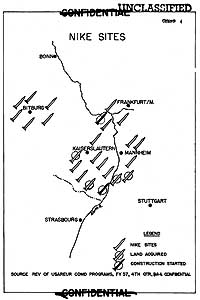 |
|
(3)
The Proposed NATO Common Infrastructure Program
In April 1957 US EUCOM proposed to convert the current
U.S. NIKE construction program in Germany into a NATO
common infrastructure program. To USAREUR the proposed
infrastructure program was without apparent benefit since
it would limit U.S. flexibility in establishing standards
and criteria and might further delay the negotiations
and construction that were underway. The complications
of international competitive bidding would prolong procedures
beyond the 45 days between turning over plans and specifications
to the Federal Republic of Germany and the start of work
by the contractor.
US EUCOM replied that the criteria and standards for common
funding of fixed NIKE installations under the NATO infrastructure
program would invariably be stated in generalized terms
in order to permit a degree of flexibility to meet host
or user nation requirements. The entire NATO procedure,
if adopted, would be implemented by the West German Ministry
of Defense; consequently, it would introduce no new disruptive
factors into current real estate matters. No further action
was taken by the close of the reporting period. |
|
|
e. Revision
of the Conversion Schedule of 90-mm Gun Battalions to NIKE.
According to Department of the Army plans the six NIKE battalions
to be organized in FY 1958 were to be converted from existing USAREUR
90-mm gun battalions. Originally USAREUR planned to convert the 25th
and 67th AAA battalions to NIKE by 1 October 1957, the 63d and 552d
battalions by 1 November, and the 45th and 95th AAA battalions by
1 December 1957. Due to the lack of available troop housing and delays
in the construction of temporary NIKE sites, USAREUR in June 1957
was forced to reschedule the priority of conversion in the following
order, the 63d, 552d, 67th, 45th, 95th, and 25th AAA battallons.
Tentative Plans for Additional NIKE Battalions
The 4 NIKE Hercules battalions, 1 group headquarters, and 1 ordnance
direct support shop due to arrive in FY 1959 were planned for location
in France. Early in June 1957 US EUCOM was asked to approach the French
authorities in order to obtain rights of entry for site reconnaissance,
surveys, and base rights for construction, as well as permission to
station these units in France. Negotiations with the French were underway
at the close of the reporting period.
Section III: Coordination of NIKE Plans with NATO
Countries
SHAPE Planning
During 1956 the United States agreed to furnish its NATO allies with
guided missiles and other special weapons delivery means. In February
1957 US EUCOM received authority to permit the Military
Assistance Advisory Groups (MAAG's) of the Netherlands,
Norway, Denmark, Belgium, France, Greece, Turkey, Italy and the Federal
Republic of Germany to begin pertinent discussions. The host countries
were to be encouraged to integrate the new weapons into their armed
forces, depending to a considerable degree upon their willingness
and capability for providing qualified personnel for technical training
in operation and maintenance of the NIKE system. The host country
would have to approve the sites selected and agree to operate the
NIKE installations in accordance with SHAPE air defense plans. Necessary
land, installations, and facilities would have to be made available,
capable personnel would have to be furnished for training, and security
safeguards similar to U.S. standards would have to be established
for the equipment. US EUCOM, in conjunction with SHAPE would retain
the right to establish broad policies and plans on all matters concerning
deployment of the weapons, the general area for the sites, and the
integration of the weapon into a coordinated air defense system for
the NATO area.
SHAPE plans for FY 1957 allocated 11 NIKE battalions to Denmark, West
Germany, Italy, and Norway, but the equipment would not actually become
available until December 1958. Early introduction of the NIKE into
the Netherlands, Belgium, France, Greece, and Turkey was also considered,
if timely planning could be accomplished and if these countries could
accommodate the missiles. To exclude these countries from NIKE discussions
might have resulted in unfavorable political and psychological reactions
that SHAPE desired to avoid; therefore, weapons for the latter five
countries were to be tentatively allocated in the FY 1958 Military
Assistance Program.
The US EUCOM Directive
In January 1957, when US EUCOM first considered making USAREUR responsible
for rendering air defense assistance to NATO recipient countries,
the Department of the Army was consulted about furnishing the necessary
personnel augmentation. While the Department of the Army agreed to
furnish plans for maintaining the equipment and for group or "package"
training, any personnel augmentation could have to be dependent upon
USAREUR requirements and the availability of qualified technical personnel.
However, before accurately establishing any over-all USAREUR personnel
requirements, the Department of the Army would have to establish a
supply system, a missile firing range would have to be secured and
equipment and trained packets would have to be ready to depart the
United States. At the same time, the MAAG representatives in Italy,
Norway, and Denmark indicated that the authorities in their respective
countries would require additional time to decide whether they should
accept NIKE equipment.
Meanwhile, on 6 March 1957 US CINCEUR assigned CINCUSAREUR the primary
responsibility for over-all coordination, assistance, and consultative
service in introducing NIKE equipment to NATO forces. In accomplishing
this mission, USAREUR was to use the MAAG's as coordinators for the
respective recipient countries. Prompt and effective implementation
of the surface-to-air missile portion of SHAPE air defense plans was
to be assured on all matters affecting the deployment of weapons,
the selection of sites, and the integration of the weapons into a
coordinated air defense plan for the NATO area. Necessary coordination
with SHAPE, through US CINCEUR, was authorized. Logistical support
of all NIKE equipment in the NATO area, including the supply of spare
parts and depot level maintenance until the recipient countries could
assume this responsibility, was to be provided by USAREUR. Finally,
USAREUR was to monitor the selection of country cadres for NIKE training,
advise on and assist in tactical and support unit training, provide
school spaces in its school system, and permit the use of its training
facilities. |
| |
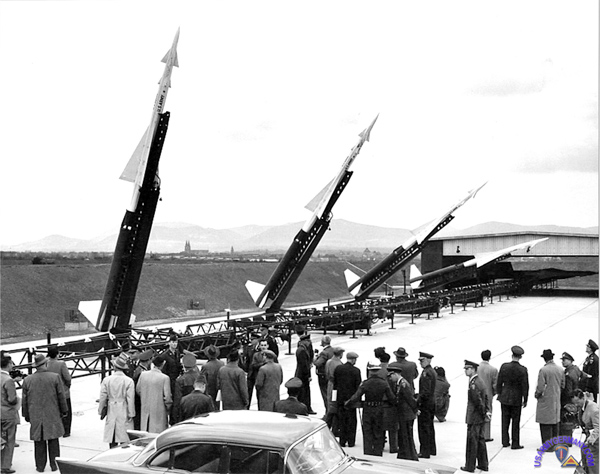
Early NIKE-AJAX site visited by VIPs and the local press
|
| |
Negotiations with the NATO Countries
a. Acceptance of the Weapons.
In order to introduce the NIKE to the various NATO countries, SACEUR's military requirements had to be coordinated with the capabilities of the United States and each respective nation's effort in the fields of personnel, training, production, financing, and site selection and construction. To carry out its responsibilities toward the recipient countries, the U.S. had to take available equipment and scheduled training programs into account. It was also necessary that SHAPE allocate weapons so that work could be started on selecting construction designs, planning defenses, and selecting sites. To assist in the over-all coordination of the various national and NATO military programs, the Department of the Army advanced a schedule of dates by which the 11 NATO NIKE battalions allocated in the FY 1957 and the 14 in the FY 1958 Military Assistance Programs should become operational. Six battalions for Germany should be ready by April 1959, 3 for Italy by May 1959, and 1 each for Norway and Denmark by June 1959. Under the tentative FY 1958 program, 6 more for Germany were to become operational by October 1959, 4 in France by November 1959, 1 each for the Netherlands and Belgium by December 1959, and 1 each for Greece and Turkey by January 1960. However, after consultation with the various MAAG's of the proposed recipient countries, USAREUR found that this priority schedule could not be enforced. In March 1957 the Federal Republic of Germany stated that it preferred to accept only 3 of the 6 NIKE battalions offered in the SHAPE FY 1957 program, with the decision on the other 3 to be delayed until after the September 1957 elections. Because of this, US EUCOM, with SHAPE concurrence, decided to reallocate the three battalions to Belgium, France, and the Netherlands and planned to train cadres from these countries in the United States. This change remained within the previously planned allocation of 25 NIKE battalions for the combined FY 1957 and FY 1958 programs, and in effect placed 9 instead of 6 NIKE battalions for the Federal Republic of Germany in the tentative FY 1958 program. By the end of the reporting period France and the Netherlands had accepted the offer; Belgian officials, however, were still considering the proposal.
b. Training.
Meanwhile, USAREUR air defense experts prepared FY 1958 NIKE training programs for West Germany, Italy, Norway, and Denmark on the basis of the Department of the Army guidance for NATO cadres. Under this arrangement, only limited NIKE training would be conducted in Europe, with cadres from the various NATO countries to be given proper training in the United States. Plans were also being made for training small numbers of key maintenance personnel in the United States and for initially providing each NATO NIKE battalion with two contract technicians to assist personnel of the respective country. Operational readiness of the NATO NIKE units could then be verified by USAREUR training inspection teams, assisted by the contract technicians and local personnel. The USAREUR training inspection teams could also instruct NATO personnel in the procedures of conducting operational readiness inspections.
According to the Department of the Army, 20 packets of cadres from recipient NATO nations could be trained in the United States by April 1958, with the first 3 scheduled to arrive in June 1957. The departmental policy was that NATO students could be sent for NIKE training before final commitments for the equipment were made with the countries involved.
By the end of the reporting period, France and the Netherlands had accepted a proposal for training future NIKE personnel in the United States and had begun preliminary screening of applicants to select prospective students. Belgium had not formally accepted a similar U.S. offer but had initiated student selection. One German battalion packet was scheduled to begin training in the United States in December 1957. Offers of training assistance to other NATO nations were being withheld pending completion of air defense studies at US EUCOM and SHAPE headquarters that could result in changes in the planned allocation of weapons. |
| |
Section
IV - Status
of USAREUR Air Defense on 30 June 1957
At the close of FY 1957, USAREUR antiaircraft artillery forces consisted
of two AAA brigades, four AAA group headquarters, five 75-mm gun battalions,
seven 90-mm gun battalions, and six self-propelled automatic weapons
battalions. Shortly after the close of the reporting period, the nondivisional
AA forces were devided between Seventh Army and Theater Army as follows:
|
| FIELD
ARMY NONDIVISIONAL AA FORCES (SEVENTH ARMY) |
| 34th
AAA Brigade, Sandhofen |
| 8th
AAA Group, Wiesbaden |
| 69th
AAA Group, Karlsruhe |
| 63rd AAA
Battalion (90-mm), Wiesbaden |
| 552nd AAA
Battalion (90-mm), Karlsruhe |
| 7th AAA
Battalion (75-mm), Sandhofen |
| 443rd AAA
Battalion (75-mm), Wiesbaden |
| 62nd AAA
Battalion (40-mm SP), Sandhofen |
| 73rd AAA
Battalion (40-mm SP), Karlsruhe |
|
| |
| THEATER
ARMY AA FORCES (USAREUR) |
| 32nd
AAA Brigade, Kapaun Barracks, Kaiserslautern |
| 1st
AAA Group, Sandhofen |
| 12th
AAA Group, Kaiserslautern |
| 25th AAA
Battalion (90-mm), Kaiserslautern |
| 40th AAA
Battalion (90-mm), Kaiserslautern |
| 45th AAA
Battalion (90-mm), Kaiserslautern |
| 67th AAA
Battalion (90-mm), Sandhofen |
| 95th AAA
Battalion (90-mm), Sandhofen |
| 5th AAA
Battalion (75-mm), Wiesbaden |
| 27th AAA
Battalion (75-mm), Kaiserslautern |
| 91st AAA
Battalion (75-mm), Wiesbaden |
|
| (Webmaster
Note: stations of units listed above are based on STATION LIST,
17 April 1957) |
|
|
| 75-mm Anti-aircraft Gun |
|
|
| |
| 1954 |
| (Source: STARS & STRIPES, Oct 23 & Dec 16, 1954) |
The first shipment of 75-mm Skysweeper antiaircraft guns was accepted by troops of the 34th AAA Brigade in Germany on Friday, Oct 22. Accepting delivery of the first shipment for the 7th Army command was Brig Gen Frank C. McDonnell, CG of the 34th AAA Bde. The new weapons arrived at the Mainz Ordnance Depot several weeks ago where they were prepared for delivery to the troops. (The Mainz Depot serves as the central receiving point for all 75-mm guns delivered to units in Germany.)
The new guns replace the 40-mm AA weapons used by several 34th AAA Bde units.
The 75-mm gun is the Army's largest calibre automatic antiaircraft artillery weapon and is the only antiaircraft weapon with a completely integrated fire control system built on the gun. The Skysweeper automatically plots range, speed and course of an approaching target and determines where the gun must point so that a shell fired any instant will intercept and destroy the target.
It is designed for use against enemy aircraft flying near-sonic speeds at low and medium altitudes. It can also be used against moving ground targets such as tanks.
The gun fires 45 rounds a minute and its built-in radar can track a 15-mile radius (the radar sweeps the sky once every 40 seconds). Its effective firing range is about four miles (more than 21,000 feet).
Components of the Skyweeper include the 75-mm gun, a radar search and track unit, a computer and power control for aiming.
The only parts of the Skysweeper not mounted on the carriage of the gun are the power plant and an auxiliary sighting control.
Webmaster note:
34th AAA Bde units scheduled to receive the 75-mm Skysweeper system (1):
|
UNIT DESIGNATION |
LOCATION |
COMMENTS |
| 5th AAA AW Bn (Mbl) |
Camp Pieri, Wiesbaden |
|
| 7th AAA AW Bn (Mbl) |
Mannheim-Käfertal |
|
| 27th AAA AW Bn (Mbl) |
Kaiserslautern |
|
| 91st AAA AW Bn (Mbl) |
Ludwigsburg |
|
| 443rd AAA AW Bn (SP) |
Wiesbaden Air Base |
|
| |
|
|
|
| (1) per "US Army Air Defense in Europe (1945-1970)," the transition to the 75-mm Skysweeper in 34th AAA Bde units was completed by mid-1955. |
|
| |
| (Source: STARS & STRIPES, Dec 19, 1954) |
The last of the 40-mm antiaircraft guns are leaving the Ordnance Depot (operated by the 32nd AAA Brigade) at Cranwich Camp at Norfolk for Burtonwood and further disposition. The 40-mm was the standard weapon of 32nd Bde units in England until they were replaced by the 75-mm gun (earlier in 1954).
Webmaster note:
32nd AAA Bde units that transitioned to the 75-mm Skysweeper system: |
UNIT DESIGNATION |
LOCATION |
COMMENTS |
| 4th AAA AW Bn (Smbl) |
Upper Heyford |
|
| 39th AAA AW Bn (Smbl) |
Sculthorpe |
|
| 60th AAA AW Bn (Smbl) |
Lakenheath |
|
| 92nd AAA AW Bn (Smbl) |
Brize Norton |
formerly 1st Prov. AAA Bn (redesignated on 14 Feb 1953) |
|
| |
| An August 29, 1954 report in the STARS & STRIPES states that the 39th AAA AW Bn in England was the first unit in Europe to transition to the Skysweeper. |
|
|
| 90-mm Anti-aircraft Gun |
|
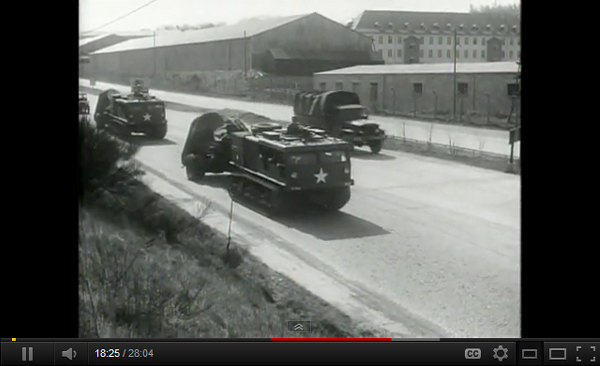
Big Picture Report #14: 25th AAA Bn, Kaiserslautern (starts at 13:00 - YouTube) |
| |
| Big Picture report shows the 25th AAA Battalion in Kaiserslautern during a monthly alert exercise. |
 |
|
| |
| (Source: Annual
Historical Report, HQs USAREUR, 1 Jul 1957-30 Jun 1958, HQ USAREUR
1959) |
|
AIR
DEFENSE 1957/58
NATO Air Defense Policy
a. The SHAPE Barrier Air Defense Concept
|
| |
|
|
| More
to follow |
| |
| (Source: Private
collection, Walter Elkins) |
 Nike-Ajax
tactical at Griesheim
Nike-Ajax
tactical at Griesheim
|
|
|
Nike
Rockets Lined up alongside Autobahn, 1958
Keystone
Press Agency, May 25, 1958
A line of American NIKE anti-aircraft missiles, stationed
alongside the Darmstadt-Mannheim autobahn. They are
part of one of the most important missile bases in Hesse.
The establishment of the base caused severe discussions
between the government of Hesse and the Federal Government
(of Germany).
(Webmaster Note: missiles were probably part
of the 67th AAA Missile Bn.
The site is on the edge of the Griesheim Army Airfield
right next to the Autobahnkreuz Darmstadt. Should be
the same site as seen in Photo #13 on the 7th
Trans Gp Page, and as identified as Installation
#5 on the Darmstadt
topo map.)
|
|
|
| |
|
|
| (Source: Annual
Historical Report, HQs USAREUR, 1 Jul 1957-30 Jun 1958, HQ USAREUR
1959) |
|
AIR
DEFENSE 1958/59
Air Defense
a. Control
In
the second half of July 1958 US EUCOM transmitted to its component
commands a draft directive assigning to CINCUSAFE the responsibility
for the air defense of Central Europe. All surface-to-air missile
units and their tactical headquarters were to be placed under the
operational control of the Air Defense Commander. In his comments
to this draft directive, CINCUSAREUR asked that gun-type artillery
units be kept under the operational control of Seventh Army. He
also wanted to have the wartime authority to displace surface-to-air
missile units, if the tactical situation necessitated such action
and CINCUSAFE had not issued any redeployment orders. Finally, CINCUSAREUR
asked that CINCUSAFE prescribe rules of engagement that would exploit
the effectiveness of surface-to-air missile units to the maximum.
More specifically, the suggested normal weapons status would be
WEAPONS FREE under Warning RED or YELLOW, no HOLD FIRE orders would
be issued in the Seventh Army area without the latter's concurrence.
While these comments were considered reasonable, US EUCOM did not
want to restrict CINCUSAFE in the execution of the mission he was
being assigned. The Air Defense Commander would seek complete Army
collaboration and support in exploiting the full value of the surface-to-air
missile units that were being placed under his operational control.
On 6 August 1958 CINCUSAFE was assigned the air defense mission as
it pertained to the US European Command, pending creation of an
integrated NATO air defense system. At the same time the 32d Artillery
Brigade and its six NIKE battalions were placed under the operational
control of CINCUSAFE. Approval of US CINCEUR would have to be obtained
before any US Army unit was deployed outside of the FOURATAF area.
In anticipation of the new air directive, CINCUSAREUR had ordered
the transfer of two NIKE battalions from the 34th to the 32d Brigade;
simultaneously, the 34th Brigade headquarters had been reduced to
a zero balance in strength. The two NIKE battalions involved in
the transfer had been employed in the defense of the Rhine River
bridges and the Seventh Army Commander therefore wanted to retain
two Skysweeper battalions to defend the bridges. Since the bridges
were protected by the operational NIKE units still in place, USAREUR
determined that atomic delivery weapons units and major headquarters
would be given priority for antiaircraft gun protection. At the
same time Seventh Army's inadequate air defense was a matter of
great concern, and the HAWK units programmed for FY's 1961 and 1962
were therefore to be deployed in the Seventh Army area, if possible.
b. HAWK Deployment
According to USAREUR's plans, four of the six HAWK surface-to-air
missile battalions were to be deployed to Europe in FY 1961 and
the two others in FY 1962. The air defense concept provided for
siting the HAWK batteries in the forward area of the US Seventh
Army so that they could complement the NIKE units by executing low-altitude
strikes or forcing hostile targets up to altitudes most favorable
to NIKE action. In FY 1961 a band of three rows of five HAWK batteries
deployed in a checkerboard pattern would cover the most likely avenues
of approach for high-priority targets flying to the west. This band
was to be extended to the north and south when NATO HAWK units became
available. The two battalions scheduled to arrive in FY 1962 were
to be so deployed as to thicken the belt in the US zone. These plans
would be subject to revision if no NATO HAWK units became available
to extend the US belt. CINCUSAFE concurred in the forward disposition
of the HAWK units, but preferred a thinner band with greater initial
north-south extension to provide the optimum over-all low-altitude
defense for Western Europe. US CINCEUR pointed out that decisions
on the deployment of HAWK units would be the responsibility of CINCUSAFE
as the Air Defense Commander. As HAWK units arrived, they would
be placed under his operational control.
In a letter to General L.L. Lemnitzer, then Army Vice Cheif of Staff,
General Hodes expressed serious concern over this air defense concept.
If the field-army commander was to carry out his responsibilities,
he would have to be given the authority to select sites and move
units to conform to his operations. Since all conventional air defense
units in Seventh Army would probably have to be inactivated to provide
the spaces for the HAWK battalions, the army commander would have
no means for carrying out his air defense responsibilities unless
US CINCEUR revised his stand. While the concept was acceptable that
HAWK units assigned to the field armies, committed to NATO, and
deployed in Europe would have to conform to the air defense procedures
prescribed by the regional NATO air defense commander, General Lemnitzer
was asked to assure that the Seventh Army commander would be given
authority to employ, position, and move HAWK units assigned for
the protection of his own forces while conforming to NATO air defense
procedures.
In his reply General Lemnitzer pointed out that HAWK battalions
were being deployed primarily for the air defense of field-army
forces; they were being provided to US CINCEUR for the air defense
of NATO Europe. On the other hand, it would be unwise at this time
to request the Joint Chiefs of Staff for a decision, as the weight
given to the theater commander's views would most likely result
in a decision unfavorable to the Army.
In a letter sent to the Deputy US CINCEUR in early December 1958,
General M.D. Taylor, then Army Chief of Staff, noted the delegation
of responsibility to CINCUSAFE and did not question the authority
of US CINCEUR to deploy NIKE and HAWK battalions. However, he did
hope that US CINCEUR and CINCUSAFE would bear in mind that the Army
surface-to-air missile units planned for deployment in Europe in
FY's 1961 anmd 1962 were designed for field-army use and had been
justified to Congress for such use. Essentially, this justification
had been based on the inadequacy of the field army's air defense,
which resulted from the growing obsolescence of current field-army
antiaircraft weapons. Hence, while these new weapons could be integrated
into the over-all theater air defense, the requirements of the field-army
commander should be given due weight in their deployment.
During the same month representatives of interested headquarters
formed a working group of the AFCENT Air Defense Committee to prepare
a low-altitude surface-to-air missile deployment plan for the Central
Region. The plan envisioned four rows of HAWK batteries from the
Kiel Canal to the Swiss border, with the westernmost row east of
the Rhine River in the CENTAG zone. Six US Army HAWK battalions
were to be included in the CENTAG Zone. By 30 June 1959, however,
SHAPE had not approved the AFCENT plan.
|
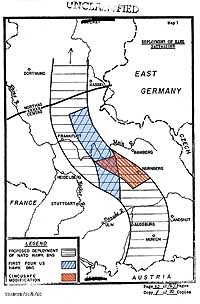 |
|
|
In April 1959 CINCUSAREUR sent CINCUSAFE his latest proposed
HAWK deployment plan with a request for concurrence to
permit the earliest possible initiation of the already
over delayed action necessary to deploy the HAWK units.
This plan was in consonance with the concepts established
by representatives of both headquarters on 24 February
1959. On the premise that the overall NATO deployment
would be in 4 rows of batteries situated as far to the
east as possible, the four US HAWK battalions to be deployed
in FY 1961 would form 2 rows (see map on left). The six
succeding battalions to be deployed in FY 1962 -- instead
of the two originally planned -- would extend and thicken
this defense within the over-all area allocated for US
units. However, there might be instances when units would
have to be deployed outside of this area because of operational
or logistical considerations. Some units would be east
of planned ground defense positions, which under certain
conditions might interfere with the field-army commander's
use of defensive atomic forces. Moreover, they would be
exposed to attack by enemy ground forces. It was therefore
considered essential that, after the initiation of hostilities,
the field-army commander have the authority to redeploy
the HAWK units and subsequently notify the air defense
commander. On 14 May 1959 the US Seventh Army was directed
to proceed with a site selection program based on this
tentative deployment plan, even though CINCUSAFE had not
yet replied. One week later CINCUSAFE's reply was received.
While he acknowledged that after hostilities had commenced
the field-army commander might be compelled to move HAWK
units under enemy pressure, CINCUSAFE insisted that he
be notified immediately. Moreover, units might have to
be deployed outside the delineated zone to conform to
tactical and logistical requirements; however, these adjustments
would have to be forward and toward the east. As the Air
Defense Commander, he had established a criterion that
low-level missiles were to be deployed as close to the
western edge of the Air Defense Identification Zone (ADIZ)
as practical, requiring the HAWK units that were to be
deployed in the south to be shifted eastward. A copy of
the USAREUR plan with the USAFE modification was forwarded
to FOURATAF headquarters for concurrence and determination
of compatibility with NATO plans for flank extensions
to the HAWK belt. |
|
|
| |
c.
Fire
Control Coordination Equipment
Selection - In September 1958, USAREUR was asked to concur
in a draft USAFE letter concerning a special FY 1959 Military Assistance
Program for the integrated air defense system. In an informal answer
USAREUR pointed out that, since all requirements for Army equipment
-- Nike, Hawk, and AN/MSG-4 -- were in approved or recommended programs,
there was no need for including such items in the USAFE program. At
a conference on the USAFE proposals held on 20 September 1958 a SHAPE
representative asked that the Army AN/MSG-4 system, which had been
approved by the Department of Defense and was actually available,
be used, together with its radar, the AN/MPS-23, at sector operations
centers (SOC's). If a SOC had its own radar, the requirement for the
AN/MPS-23 would be eliminated. When the USAFE proposals were forwarded
to the Secretary of Defense on 27 September 1958, CINCUSAREUR took
exception to two points: the plan to locate the AN/MGS-4 system in
the SOC, and the possibility that the AN/MPS-23 might be separated
from the AN/MSG-4. However, since a basic Department of Defense decision
concerning data handling and control systems was pending, US EUCOM
preferrred to wait until that decision had been made before discussing
the point raised by USAREUR.
Meanwhile, the Department of the Air Force had challenged the Department
of the Army deployment of AN/MSG-4 equipment to overseas areas where
the Department of the Air Force contemplated deployment of TACS BADGE
(GPA-73) equipment. This controversy had been referred to a Joint
Tactical Group under the chairmanship of the Department of Defense.
This group apparently had to determine both the time when GPA-73 equipment
would become available in overseas theaters and the advisability of
procuring and deploying AN/MSG-4 quipment.
Engineer testing of the AN/MSG-4 started in the spring of 1959, and
it was anticipated that an interim report, upon which the Department
of the Army could base its decision on deployment, would be received
in October 1959. If the evaluation was favorable, the Department of
the Army would make a prototype set available to USAREUR by about
January 1960. The Department of Defense was expected to decide on
the procurement of the AN/MSG-4 system after the interim report had
been evaluated.
Location of Equipment - In anticipation
of the receipt of the AN/MSG-4 equipment by the 32nd Artillery Brigade,
CINCUSAFE asked that planning for its installation be coordinated
with his staff. The air defense of (southern) Germany would be conducted
from three prime ground environment terminals -- the Command and Reporting
Centers (CRC's) at Langerkopf,
Giebelstadt and Freising
-- that he supervised from the Kindsbach
Caves. Accordingly, it was his desire that when the AN/MSG-4
system was issued to the 32nd Artillery Brigade, the Army functions
pertaining to target assignment, weapons commitment, and control status
be performed in the CRC's.
General Hodes objected to the collocation of the AN/MSG-4 equipment
at the CRC's because this would reduce the over-all effectiveness
of the 32nd Artillery Brigade. The AN/MSG-4 system was designed to
complement the antiaircraft defense and would therefore have to be
located to the best tactical advantage of that defnese. As an alternate
solution, he suggested the use of closed circuit television, which
would permit the CRC's to obtain a complete picture of the artillery
brigade operations.
But the Air Defense Commander continued to press for positive control
over all weapons. According to him, collocation of the weapons control
centers was necessary to have a fully integrated air defense system.
General Eddleman concurred in the USAFE plan when he was satisfied
that collocation of the supervision of surface-to-air missiles and
interceptors would improve joint action and simplify and expedite
the flow of intelligence to the NIKE firing units.
On 1 June 1959, CINCUSAFE directed that a Sector
Operations Center (SOC), consisting of the Missile Control
Center (Army Air Defense Command Post - AADCP) and the Air Force control
elements (Command and Reporting Center) be established at Langerkopf.
d. USAREUR's Air Defense
Concept
The air defense of Central Europe was to be conducted according to
an area concept by which the Seventh Army would operate under an air
defense umbrella of NIKE, HAWK, and fighter interceptors -- US and
NATO -- under the over-all operational control of the Air Defense
Commander. This concept would involve an initial HAWK barrier along
the Iron Curtain, backed up by a NIKE defense in accordance with SACEUR
plans. It was not intended to reduce the mobility of the HAWK units
in the forward areas of the combat zone. Their tactical control and
survival through redeployment would be assured by the close and continuing
coordination of the 32nd Artillery Brigade and the Seventh Army. |
 |
|
|
| The 1960s |
| |
| (Source: Rick Anders, Germany, and other sources) |
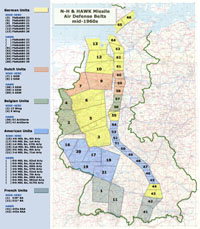 |
|
UPDATED! (Dec 25, 2006)
I have taken the latest information from my research and that of others and created the following map to update my efforts of presenting an overview of the NATO Integrated Air Defense network in the Central Region. Still working on additional information so the map reamins in draft form.
The sector that I am having the biggest difficulties with is that of SOC 4. This area was comprised of French N-H and US, German and French HAWK units and appears to have been very "dynamic" for the period covered. From what I can tell, the US HAWK units never really deployed to their originally assigned battalion areas in the SOC 4. Also, the French N-H and HAWK missile units never reached full deployment and the sudden pull-out in 1966/67 forced several changes to the original depoloyment plan.
Anybody who can provide additional details or provide corrections to this information is cordially invited to contact me . . |
|
|
|
| NIKE-HERCULES BELT (this list will updated soon with the latest information that I have - Dec 25, 2006) |
| |
| Details in the table below are incomplete and will be enhanced or corrected with information from the most recent research soon. |
A |
B |
C |
UNIT |
COMMENTS |
1 |
25-28 |
FR |
520 BA |
Site 1-27 (Böttingen) was apparently the only battery in the Battalion that was fully operational and nuclear certified |
2 |
29-32 |
BE |
13 Wing |
|
3 |
33-36 |
GE |
FlaRakBtl 23 |
|
4 |
49-52 |
BE |
9 Wing |
|
5 |
37-40 |
GE |
FlaRakBtl 22 |
|
6 |
41-44 |
GE |
FlaRakBtl 21 |
|
7 |
53-56 |
NL |
2 GGW |
2 GGW and 1 GGW were consolidated to form the 12 GGW in 1975 |
8 |
-- |
|
|
not assigned - does anybody know why? |
9 |
74-77 |
NL |
1 GGW |
|
10 |
57-60 |
GE |
FlaRakBtl 25 |
|
11 |
61-65 |
FR |
521 BA |
Site 11-65 (Inneringen) was apparently the only battery in the Battalion that was fully operational and nuclear certified; Inneringen was originally assigned to Bn Area #1 but later (when ?) reassigned to Area #11. |
12 |
66-69 |
GE |
FlaRakBtl 24 |
|
13 |
70-73 |
GE |
FlaRakBtl 26 |
|
14 |
-- |
|
|
Bn area assigned to French; no unit deployed |
15 |
-- |
|
|
not assigned - does anybody know why? |
16 |
14-17 |
US |
4/6 Arty |
|
17 |
1-3,5 |
US |
5/1 Arty |
|
18 |
18-21 |
US |
1/67 Arty |
|
19 |
6,8-10 |
US |
2/56 Arty |
|
20 |
4,11-13 |
US |
5/6 Arty |
|
21 |
7,22-24 |
US |
3/71 Arty |
. |
|
LEGEND
| A |
|
Battalion area number |
| B |
|
Battery site sequence numbers |
| C |
|
National assignment |
|
|
| |
 Book cover
Book cover |
|
30 ans de Nike, by Major d'Aviation J.M. De Blende, 1990. Published by the Forces Belges en Allemagne (Belgian Forces in Germany).
There are about 300 pages. About half of the book is history of the Belgian units who commanded, operated and supported the Nike missiles; the other half contains rosters, order of battle and other charts.
I just received a copy of this book (end of October 2007). I selected the French language version (there is a Flemish version also). It will take some time for me to review the book, but I will post some excerpts from the book in the future.
Anybody interested in obtaining (purchasing) a copy of the book can contact the webmaster and I will forward the request to the appropriate persons. |
|
|
|
| HAWK BELT (this list will continue to be updated as I collect more information) |
| |
|
| |
|
| |
Ongoing Research Project: I have created a map (above) that shows the deployment of US Army HAWK battalions in southern Germany mid-1963. This early phase of deployment of 32nd AAA Bde HAWK battalions, 1961-1964, saw the 10th Arty Group (Munich) positioned to the south of the 69th Gp (Würzburg).
This was a temporary situation as the 10th initially took over air defense sites in the area around Munich that would eventually be occupied by German and French HAWK batteries once they became operational. In early 1964, with the German & French HAWK batteries coming on line, the 10th Arty Gp moved to Darmstadt and changed its area of responsibility to the northern half of the US HAWK barrier (approx. between Kassel and Hanau).
There is not very much information available on these early years, so I have decided to try to create an order of battle for the 10th and 69th Arty groups in mid-1963. I have the location of the nine HAWK battalions but am still looking for additional information on the group assignments of these battalions for that period.
If anyone has information on the Group assignment (in 1963) or when the various HAWK battalions arrived in
Germany, I would like to hear from them! |
|
| |
| (Source: Author's collection) |
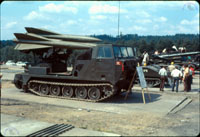 |
|
Anybody who can provide additional details or provide corrections to this information is cordially invited to contact me . . |
|
|
|
| |
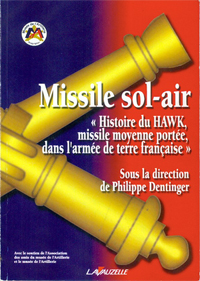 Book cover
Book cover |
|
Missile sol-air: "histoire du Hawk, missile moyenne portée, dans l'armée de terre française, Philippe Dentinger, editor, 2008. Published by Lavauzelle, France.
There are about 192 pages.
A number of authors, all of them specialists in their field, trace the history of the HAWK in all its aspects: the reasons for and details of its acquisition and its construction; the various missions assigned to it (NATO air defense, as well as French national missions such as operations in Chad); material developments; specific organizations of support; staff training in the U.S.
The preface was written by Major General Balerin (former "chef de corps" of a regiment equipped with this system, commander of the Artillery School and a support weapons inspector) makes it clear that the HAWK missile system was a pioneer in areas considered today as fundamental in modern armies. |
|
|
| |
| NATO N-H & HAWK UNITS (still doing research - please submit corrections & additions to webmaster) |
| SOC-1 (Brockzetel) |
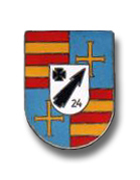
FlaRakBtl 24 |
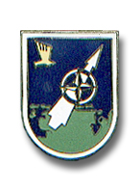
FlaRakBtl 26 |
|
|
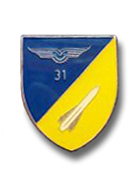
FlaRakBtl 31 |
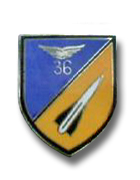
FlaRakBtl 36 |
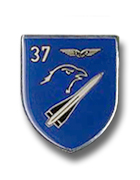
FlaRakBtl 37 |
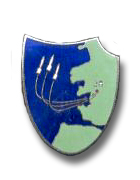
FlaRakBtl 38
|
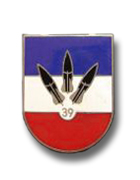
FlaRakBtl 39 |
|
|
|
|
|
| SOC-2 (Uedem) |
|
|
| SOC-3 (Börfink) |
|
|
| SOC-4 (Drachenbronn, FR) |
|
 |
|
|
| The 1970s |
| |
| (Source: AIR DEFENSE TRENDS, Feb 1973) |
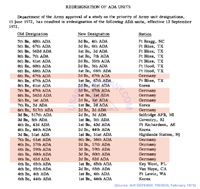
List of ADA units redesignated Sept 1972
|
|
Effective 13 September, 1972 several ADA units were redesignated worldwide - including 10 battalions in Germany.
|
|
|
|
|
| MIM-23B Improved HAWK |
|
|
|
| (Source: AIR DEFENSE TRENDS, October 1972; HAWK article on WIKIPEDIA) |
The Improved HAWK system would become the major medium-range, surface-to-air
missile deployed within NATO. It shows two significant improvements over the basic HAWK system: a newly developed missile and the Information Coordination Central.
The new missile featured
  an all solid-sate guidance section an all solid-sate guidance section
  a larger warhead (75 kg versus 54 kg) a larger warhead (75 kg versus 54 kg)
  an improved rocket motor (M112) an improved rocket motor (M112)
The ICC provides
  a digital computer for improved target data processing a digital computer for improved target data processing The IHAWK was designed for defense of a mobile field army in combat. An important requirement for this mission was that all battery equipment be carried or towed by M-35 (or M-36) cargo trucks which were organic to the battery. (All battery equipment was also capable of being airlifted via helicopter for rapid relocation.) Components of the IHAWK Battery: ACQUISITION & FIRE CONTROL GROUP
Battery Control Central (BCC) - performs tactical control of the battery and each of the firing sections
Information Coordination Central (ICC) - houses IFF, communications and an ADP. This is the data processing
and communications center for the battery.
The ADP (Automatic Data Processor) is the computer. It receives acquisition data from the IPAR and ICWAR and automatically assigns targets (to the launchers) on a pre-established priority basis. For critical targets that must be engaged immediately, the ADP can also fire the missile.
Improved Pulse Acquisition Radar (IPAR) (AN/MPQ-50) - this is a long range, high altitude search radar. It serves as the primary source of high- to
medium-altitude aircraft detection for the battery.
Improved Continuous Wave Acquisition Radar (ICWAR) (AN/MPQ-48) - this radar is used to detect targets. It acquires targets through 360 degrees of azimuth and provides target radial speed and raw range data. The ICWAR provides
for the detection of aircraft flying at the lowest altitudes in the presence
of heavy ground clutter.
Range-Only Radar (ROR) (AN/MPQ-37) - automatically provides target range measurements when the other radars are being jammed in an electronic countermeasures environment. GUIDANCE GROUP
High-power Illuminating Radar (HIPIR) (AN/MPQ-39) - the HIPIR automatically acquires and tracks designated targets in azimuth, elevation and range. It also serves as an interface unit supplying azimuth and elevation launch angles computed by the ADP in the ICC or the ICPC for up to three launchers.
The HPIR J-band energy reflected from the target serves as a reference signal to the semi-active homing missile. (The HAWK missile "homes" throughout its flight to intercept on the energy reflected by the target.)
LAUNCHING & HANDLING GROUP
Launcher - the missile launcher (designated to fire) activates a missile, aims it into a collision course with the target and launches the missile.
Handling Equipment - the handling equipment includes the tracked loader used for storage of additional ready missiles. (During operations, depleted missile launchers can be rapidly reloaded by the tracked loader.)
TEST EQUIPMENT GROUP
The ground equipment contains built-in test equipment. The IHAWK missile is a "certified round" which requires no field test or maintenance. Field maintenance equipment is incorporated in the mobile configuration and support equipment (diesel generators, interconnceting cabels, and prime movers) are also part of the tactical battery.
Operation:
An ADP is contained in both the ICC and the ICPC (1). It provides for three modes of operation: manual, normal and automatic.
The manual mode is the same as in basic HAWK except that the tactical control officer (TCO) is assisted by the ADP. In the BCC, the TCO monitors radar data, manually selects for engagement and assigns each selected target to a firing position. The fire control operator controls the HIPIR, launcher and missile launch operations.
In the normal mode all of the operator functions are perfomed automatically with the exception that the TCO must manually accept each target designation before the automatic sequence can continue.
In the fully automatic mode the manual acceptance of individual targets by the TCO is negated. This mode is especially useful when the battery is under stauration attack or for pop-up targets.
In both normal and automatic modes, the operators monitor operations and the TCO can override automatic functions.
(1) Improved Platoon Command Post (IPCP)
|
| |
| (Webmaster Note: According to an article in the 32nd AADCOM NEWS (Oct 1982), 6th Bn, 62nd ADA at Spangdahlem AB, became the first operational IHAWK (towed) battalion in USAREUR in Nov 1972.) |
 |
|
|
| The 1980s |
| |
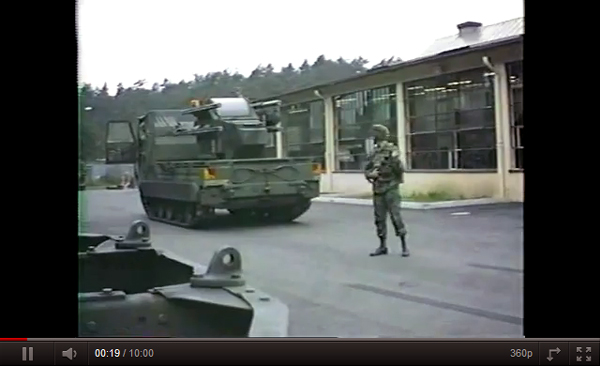
 |
Emplacement drill for the Chaparral Missile competition held in Crete, Greece every year - 3rd Pltn, B Btry, 3rd Bn, 44th ADA, Ramstein AB, 1989
( two additional videos - Upload drill - Bad Crew Drill ) |
|
|
| |
| (Source: Air Defense Artillery Bulletin, Spring 1984) |
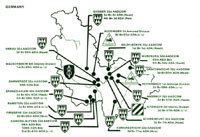
Location of ADA units in Germany, effective 31 May 1984
|
|
Senior ADA Commanders in Germany:
MG Victor J. Hugo, 32nd AADCOM
 COL Robert J. Weinfurter, 10th ADA Brigade COL Robert J. Weinfurter, 10th ADA Brigade
 LTC Joseph G. Garrett III, 1st Bn, 1st ADA (HAWK) LTC Joseph G. Garrett III, 1st Bn, 1st ADA (HAWK)
 LTC Robert H. Upchurch, 2nd Bn, 2nd ADA (HAWK) LTC Robert H. Upchurch, 2nd Bn, 2nd ADA (HAWK)
 COL Wallace C. Arnold, 69th ADA Brigade COL Wallace C. Arnold, 69th ADA Brigade
 LTC Maurice R. Alexander, 3rd Bn, 7th ADA (HAWK) LTC Maurice R. Alexander, 3rd Bn, 7th ADA (HAWK)
 LTC Stephen J. Kempf, 6th Bn, 52nd ADA (HAWK) LTC Stephen J. Kempf, 6th Bn, 52nd ADA (HAWK)
 LTC John J. O'Connell Jr., 2nd Bn, 57th ADA (HAWK) LTC John J. O'Connell Jr., 2nd Bn, 57th ADA (HAWK)
 LTC Andrew L. Jackson Jr., 3rd Bn, 60th ADA (HAWK) LTC Andrew L. Jackson Jr., 3rd Bn, 60th ADA (HAWK)
 COL Joe B. Thurston Jr., 94th ADA Brigade COL Joe B. Thurston Jr., 94th ADA Brigade
 LTC William M. Arrants, 2nd Bn, 56th ADA (HERC) LTC William M. Arrants, 2nd Bn, 56th ADA (HERC)
 LTC John P. Rose, 3rd Bn, 59th ADA (HAWK) LTC John P. Rose, 3rd Bn, 59th ADA (HAWK)
 LTC (P) Donald E. Nowland, 2nd Bn, 62nd ADA (HAWK) LTC (P) Donald E. Nowland, 2nd Bn, 62nd ADA (HAWK)
 LTC Theodore S. Clements, 3rd Bn, 71st ADA (HERC) LTC Theodore S. Clements, 3rd Bn, 71st ADA (HERC)
 COL Jay M. Garner, 108th ADA Brigade COL Jay M. Garner, 108th ADA Brigade
 LTC Fredrick C. Beauchamp, 6th Bn, 56th ADA (C/V) LTC Fredrick C. Beauchamp, 6th Bn, 56th ADA (C/V)
 LTC Vernon L. Conner, 2nd Bn, 60th ADA (C/V) LTC Vernon L. Conner, 2nd Bn, 60th ADA (C/V)
 LTC
James L. Smith, 2nd Bn, 67th ADA (C/V) LTC
James L. Smith, 2nd Bn, 67th ADA (C/V)
 LTC James P. Durbin, 2nd Bn, 59th ADA (C/V), 1st Armd Div LTC James P. Durbin, 2nd Bn, 59th ADA (C/V), 1st Armd Div
 LTC Richard D. Kline, 3rd Bn, 61st ADA (C/V), 3rd Armd Div LTC Richard D. Kline, 3rd Bn, 61st ADA (C/V), 3rd Armd Div
 LTC Leopoldo R. Vasquez Jr., 3rd Bn, 67th ADA (C/V), 3rd Inf Div LTC Leopoldo R. Vasquez Jr., 3rd Bn, 67th ADA (C/V), 3rd Inf Div
 LTC Lowell J. Smith, 1st Bn, 59th ADA (C/V), 8th Inf Div LTC Lowell J. Smith, 1st Bn, 59th ADA (C/V), 8th Inf Div
 LTC Joe B. Carden, 5th USA Arty Group LTC Joe B. Carden, 5th USA Arty Group
 COL Richard J. Galliers, 559th USA Arty Group (Italy) COL Richard J. Galliers, 559th USA Arty Group (Italy) |
|
|
|
|
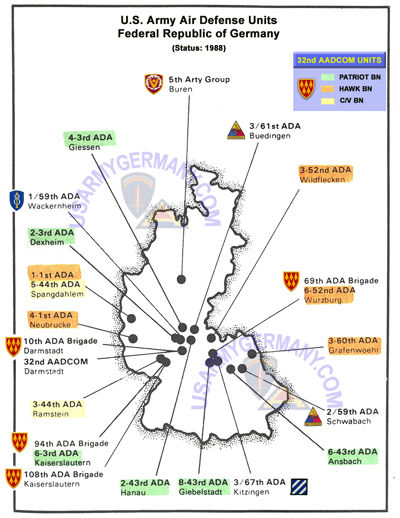
USAREUR ADA Units, 1988 |
| |
|
| |
| (Source: Email from Rolf Bosse, Germany) |
| Rolf has submitted a Google Earth link that shows all (?) former NATO HAWK tactical sites in the Central Region. Click here to view the satellite images. |
| |
 |
|
| |
| Related Links: |
| FULDA-GAP website - HAWK Page |
| |
| |
|
